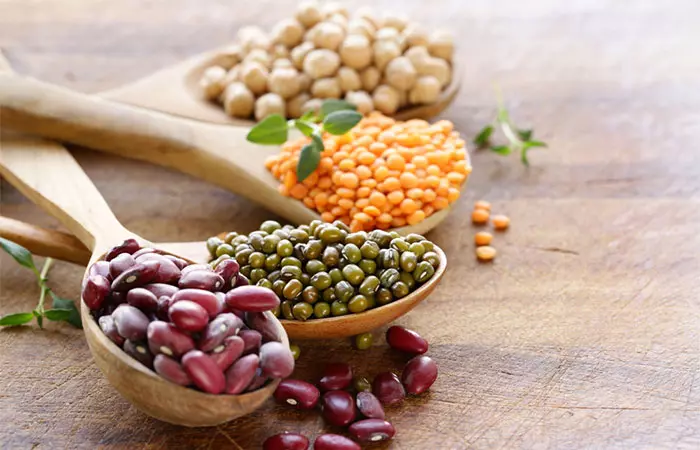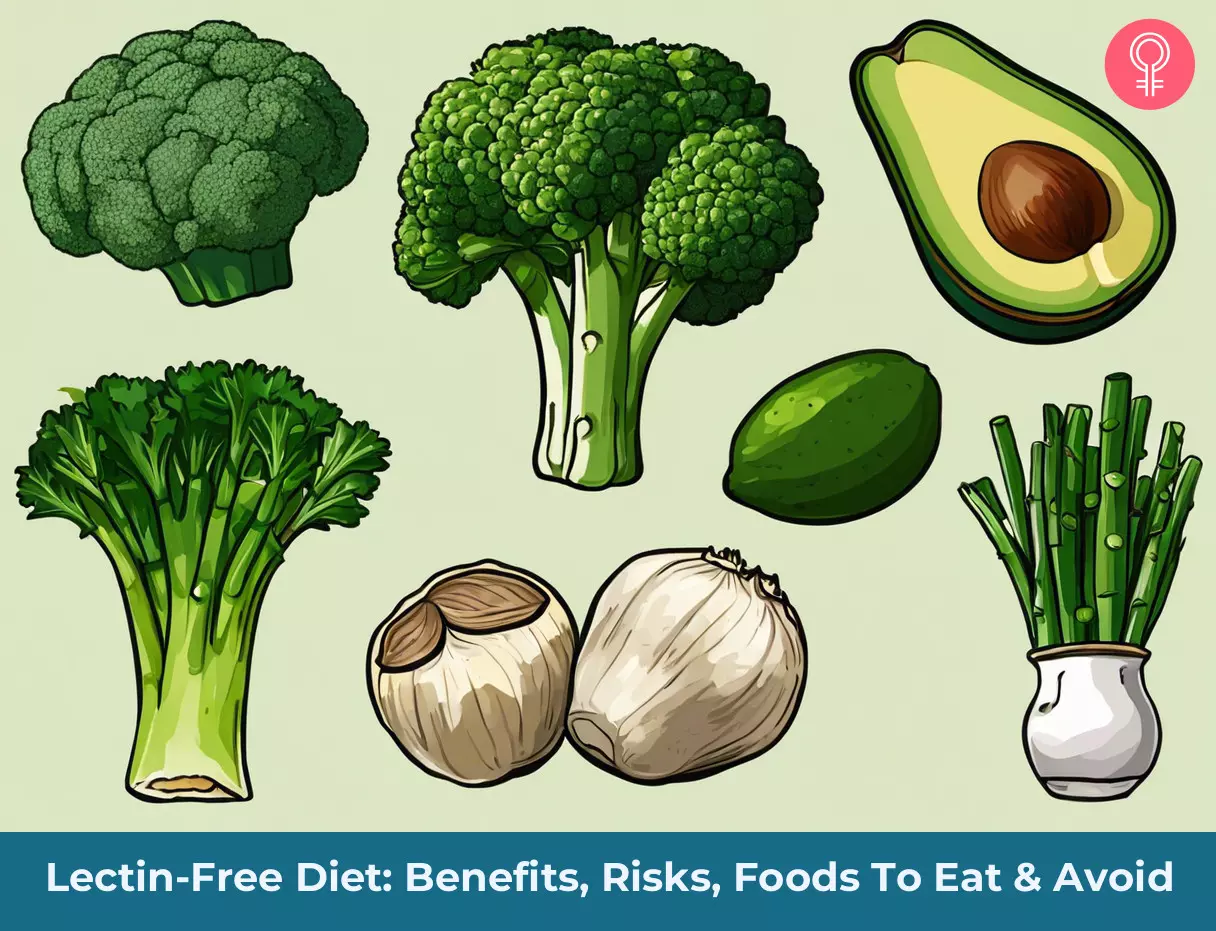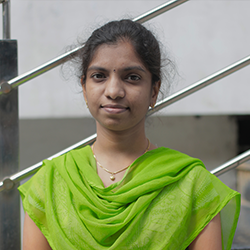Dr. Steven Gundry, a renowned cardiologist, is credited with popularizing this diet and bringing it to the spotlight with his book “The Plant Paradox.” In his book, Dr. Gundry presents compelling arguments for the role of lectins in the development of many modern ailments and advocates for minimizing their consumption to enhance overall health and well-being. This article explores everything you need to know about a lectin-free diet, foods to eat and avoid, risks, and related tips. Read on!
What Are Lectins?
Lectins are a type of protein or glycoproteins found in various plant and animal foods. They are present in varying amounts in foods like legumes (beans, lentils, and peas), grains (especially wheat), nuts, seeds, and vegetables (1). Lectins can bind to specific sugar molecules and play a role in plant defense mechanisms against predators (2). While lectins are primarily associated with plant foods, some animal-based foods, like seafood and poultry, can have trace amounts of lectins. Cooking, soaking, and fermenting foods can reduce lectin levels, making them safer to consume. Lectins may, sometimes, cause digestive and other health issues. Scroll down to know whether lectins are good or bad for your health.
Are Lectins Good Or Bad For You?
While some lectins can interfere with digestion and nutrient absorption in the gut, causing discomfort or malabsorption in sensitive individuals, not all lectins have the same effects (2). Many lectin-containing foods, like legumes and whole grains, are rich in essential nutrients like vitamins, minerals, and fiber and have been consumed by humans for millennia. The effects of lectins on health can vary from person to person. Hence, relying on a balanced diet ensures proper nutrition while minimizing potential adverse effects. Cooking, soaking, and fermenting foods may also reduce lectin content and make them safer for consumption (3). If you have specific dietary concerns related to lectins, consult a healthcare professional or registered dietitian for personalized guidance. Healthcare professionals have expressed concern regarding a lectin-free diet, as it eliminates multiple food groups. Let’s explore what this diet entails in the following section.
What Is The Lectin-Free Diet?
The lectin-free diet is an elimination diet that eliminates or restricts the intake of foods high in lectins like beans, peas, some nuts, and certain vegetables like tomatoes, eggplants, and peppers. The proponents of this diet claim that lectins can be harmful to human health and that avoiding or reducing the consumption of dietary lectins can benefit health by decreasing inflammation, supporting weight loss, and minimizing symptoms of various autoimmune and digestive disorders (4). However, it’s important to note that scientific evidence supporting these claims is limited and mixed, as the majority of lectin-containing foods are highly nutritious and beneficial for health. Moreover, the diet cannot be completely lectin-free, as all plants contain varying amounts of lectin, which adds to the confusion, leading to the belief that this is another fad diet. If you are considering the lectin-free diet, it’s essential to consult with a healthcare professional or registered dietitian for guidance. They will help you assess your individual dietary needs and make informed choices about which foods to include or avoid based on your specific health goals and conditions. Let’s uncover the benefits of this diet in the next section.
Benefits Of A Lectin-Free Diet
Some potential benefits attributed to a lectin-free diet include:
1. May Improve Digestion
People struggling with symptoms of irritable bowel syndrome (IBS) may benefit from a lectin-free diet. Certain foods, like legumes, contain FODMAPs, which trigger IBS symptoms. Some of these foods are also high in lectins (6). Therefore, eliminating them may possibly improve gut health.
2. May Reduce Inflammation
A study published in the Journal of Immunology found that plant lectins could trigger inflammatory responses in the body (7). Hence, a lectin-free diet may help the risk of inflammation in the body, potentially benefiting individuals with autoimmune conditions or chronic inflammatory disorders.
3. May Support Weight Loss
A lectin-free diet restricts the intake of processed food and promotes the intake of whole foods. As a result, this might reduce your total calorie intake, which is beneficial for people who are trying to manage or reduce their weight.
4. May Help Reduce Risk Of Diseases
A lectin-free diet restricts the intake of processed foods, which may potentially help prevent the risk of developing diseases like cardiovascular and gastrointestinal conditions, and type 2 diabetes (8).
5. May Reduce The Risk Of Allergies
For those with allergies or sensitivities to specific lectins present in food groups such as nightshade vegetables, avoiding these foods can help prevent allergic reactions or discomfort (9), (10). In the following sections, let’s find out what you can eat and what you cannot as part of the lectin-free diet.
Foods To Eat On A Lectin-Free Diet
Here’s a list of foods that are usually considered acceptable on a lectin-free diet: Vegetables
Leafy greens (e.g., spinach, kale, and chard) Cruciferous vegetables (e.g., broccoli, cauliflower, and Brussels sprouts) Asparagus Celery Onions Garlic Leeks Artichokes Avocado Okra
Fruits (in moderation due to sugar content)
Green bananas Olives Melons Certain berries (like blueberries, raspberries, strawberries)
Proteins
Grass-fed and pasture-raised meats (e.g., beef, lamb, and pork) Free-range poultry Wild-caught fish (like salmon, sardines, and mackerel) Pasture-raised eggs
Fats
Olive oil Avocado oil Coconut oil Ghee (clarified butter) Grass-fed butter (in moderation)
Nuts And Seeds
Macadamia nuts Walnuts Pecans Hemp seeds Flax seeds Chia seeds
Grains
Millet Sorghum
Others
Coconut milk and unsweetened coconut products Lactose-free dairy products (in moderation and depending on individual tolerance) Herbs and spices (e.g., basil, oregano, thyme, turmeric, and rosemary) Dark chocolate (with high cocoa content and low sugar)
Let’s check out the following section for a list of foods to avoid while on the lectin-free diet.
Foods To Avoid On A Lectin-Free Diet
These are some of the foods you should restrict while on this diet: Legumes
Beans (e.g., kidney beans, black beans, and pinto beans) Lentils Peas (including split peas) Chickpeas (garbanzo beans) Soybeans and soy products (tofu, tempeh, and edamame)
Grains
Wheat and wheat products (bread, pasta, and cereal) Barley Rye Quinoa Oats (unless certified gluten-free) Rice (especially brown rice) Corn and corn products
Nightshade Vegetables
Tomatoes Potatoes Eggplants Bell peppers Chili peppers
Nuts And Seeds
Peanuts (including peanut butter) Cashews Sunflower seeds Chia seeds
Dairy
Most dairy products, especially milk and cheese
Others
Certain seeds and grains used as food additives (e.g., guar gum, xanthan gum) Refined and processed oils (e.g., vegetable oils, hydrogenated fats) Grain-fed and conventionally-raised meats Farm-raised fish
So these are some foods high in lectins that you must avoid on a lectin-free diet. While some evidence suggests that reducing dietary lectins may help individuals, especially those with sensitivities or digestive issues, the lectin-free diet has its share of critics. Let’s check out the potential risks of this dietary approach in the following section!
Risks Of A Lectin-Free Diet
Common risks associated with the lectin-free diet include: Apart from these, following a lectin-free diet can be socially isolating and may require careful planning when dining out or attending social events. If you are considering the lectin-free diet, it’s necessary to approach it carefully and with a focus on maintaining a balanced and nutritious eating plan. Check out the following section for guidelines and tips for maintaining the diet!
Lectin-Free Diet Guidelines And Tips
Here are some guidelines and tips to help you get started:
Familiarize yourself with the lectin-free food list to limit or eliminate foods high in lectins from your diet. Replace lectin-rich foods with lectin-free or lower-lectin alternatives. For example, opt for sweet potatoes or squash instead of white potatoes. Be sure to prepare lectin-containing foods properly by soaking, boiling, and fermenting them to make them more digestible and reduce lectin content. Incorporate lean sources of protein, like poultry, fish, and tofu in your diet. Avoid processed meats, which may contain added lectin-containing ingredients such as wheat or soy flour. Incorporate healthy fats from sources like olive oil, avocados, and nuts (in moderation) to gain essential nutrients and maintain satiety. Be mindful when reading food labels, as many processed and packaged foods may contain hidden sources of lectins or lectin-containing additives. Ensure that your meals are well-balanced and include a variety of foods to meet your nutritional needs. Pay attention to nutrient intake to avoid potential deficiencies. Consider working with a dietitian to plan a nutritionally adequate lectin-free diet. Drink plenty of water throughout the day to stay hydrated and support overall health. Pay attention to how your body responds to the diet. If you experience adverse effects or nutrient deficiencies, consult a healthcare professional to adjust your approach. Keep in mind that the lectin-free diet can be quite restrictive, and it’s okay to be flexible and allow occasional indulgences to maintain a balanced and enjoyable diet. Plan ahead and communicate your dietary preferences to accommodate your needs when dining out or attending social events.
Note: For any diet where you eliminate food or food groups, it is always recommended that you seek professional medical and nutrition advice before following the diet. How long should one follow a lectin-free diet to see results? The time it takes to see results on a lectin-free diet varies among individuals, but many notice changes within a few weeks to a couple of months. Can I follow a lectin-free diet as a vegetarian or vegan? Following a strict lectin-free diet as a vegetarian or vegan can be challenging, as the diet eliminates many plant-based protein sources like legumes and certain grains. However, it is possible to adopt the diet with careful planning to ensure adequate plant-based protein intake. Consult a registered dietitian to get a customized plan to avoid the risk of nutritional deficiencies. Are there any exceptions for children or pregnant individuals on a lectin-free diet? Children and pregnant individuals should avoid this diet because it may limit essential nutrient intake. Consult a healthcare provider or dietitian before starting this diet to determine your suitability and understand safer ways to reduce lectin intake. Can a lectin-free diet help with weight loss? Some individuals may experience weight loss on a lectin-free diet, primarily due to the restriction of calorie-dense processed foods and lectin-rich foods like grains and legumes. However, the diet’s effectiveness for weight loss varies among individuals. Can you eat tuna on a lectin-free diet? You can eat tuna on a lectin-free diet, as it is a source of lean protein. However, one must avoid packaged tuna preparations that include lectin-rich ingredients or additives. Can you eat pickles on a lectin-free diet? Most traditional pickles, made through fermentation, are acceptable on a lectin-free diet, as fermentation usually reduces lectin content. However, you must read labels and avoid the ones with added lectin-containing ingredients.
Illustration: Lectin-Free Diet: Benefits Risks Foods To Eat & Avoid
Are you curious about the lectin-free food plan and how it might impact your health? Check out the video below to understand the ins and outs of the lectin-free diet and whether it’s suitable for you or not.











